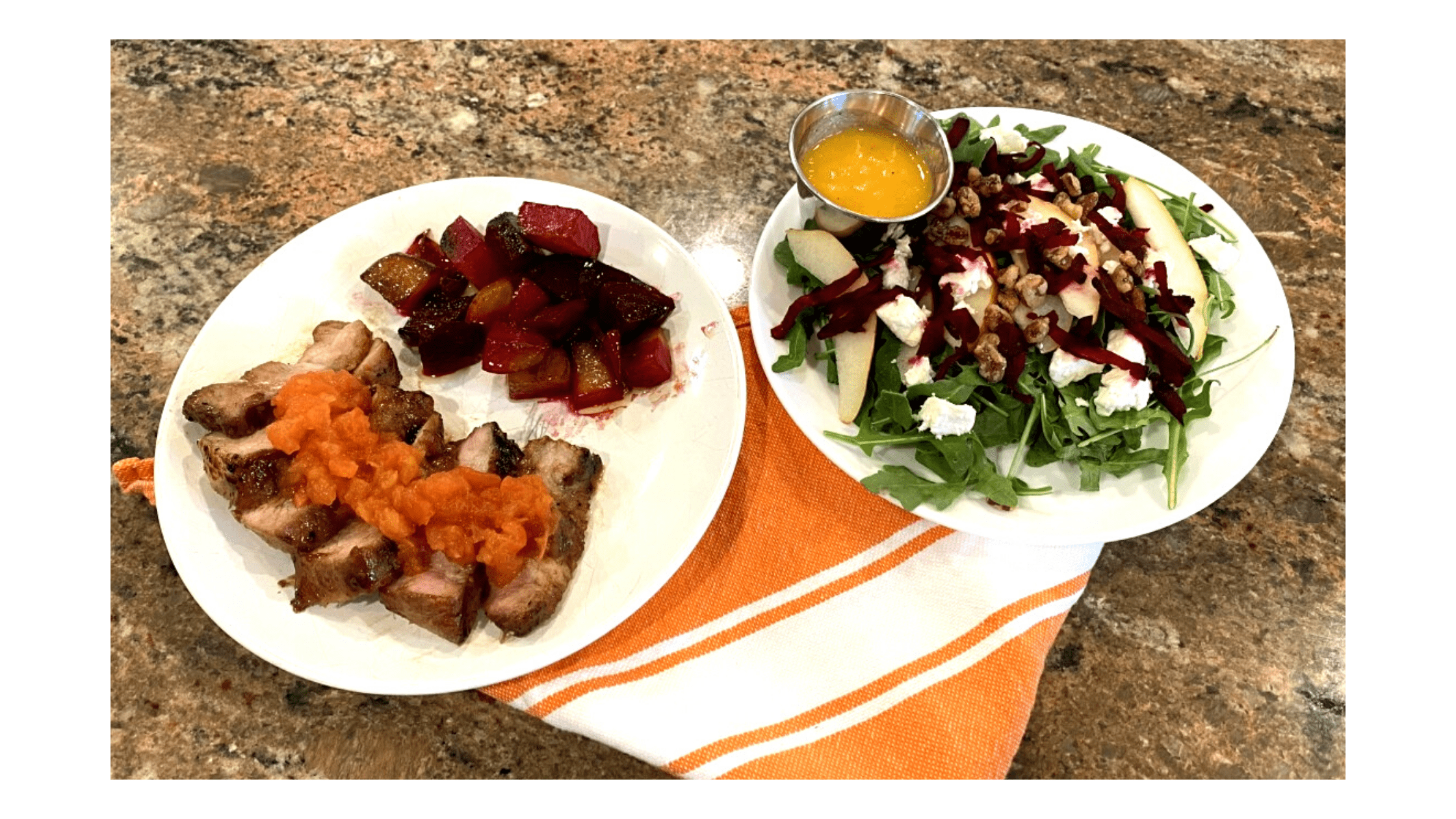
Nutrition exposures: when science and art meet recovery
Terra is a six-bed residential eating disorder treatment facility in Westlake Village, CA. We have outstanding, supportive staff members who work synergistically to create a positive, uplifting environment. Terra is a lovely house with plenty of space in the backyard for activities such as gardening, basketball, and other outdoor games. We are also lucky to be located in sunny southern California, where the weather is pleasant year-round.
One day, we had the last-minute improvisational idea to combine our art and nutrition groups. Our part-time chef, Allie, had done a Chopped-inspired group with our PHP program. It went well, so I decided to use her idea with our RTC clients!
Food experimentation meets creativity and nutrition
The goal is to allow clients to get in touch with their creative side and experiment with food, learn new kitchen skills/techniques, and collaborate as a team with other clients. This group work in the kitchen is beneficial for clients at the RTC level of care because they tend to struggle with rigidity in food selection.
This creative challenge allowed them to think outside the box and prepare something they would enjoy using some ingredients they wouldn’t typically select. It also helps them develop self-efficacy in meal planning/meal prep as the clients work towards stepping down to a lower level of care.
Allowing clients to create a meal together helps them develop camaraderie with their peers and enjoy the fruits of their labor. I also believe that creating the meal helps relieve some anxiety because it allows the clients to be included in meal selection and put some of their own preferences into the dish.
Safety first
While in the kitchen, clients always wear hairnets and/or hats to keep their hair contained. They also wear gloves and are required to wear closed-toed shoes at all times while in the kitchen. During COVID we have additional protocols and clients are required to socially distance during meal times.
During food preparation, we allow for a few clients at a time to portion their meals/snacks. We also assign tasks to each client so that they are able to work together but stay socially distant from one another.
The recipe!
Since the recipe was created on the fly by our clients, there isn’t an exact recipe. But here is an outline of the steps they took:
- First, they marinated the pork shoulder in teriyaki sauce, adding minced garlic, garlic powder, and onion powder.
- Clients then roasted it in the oven before tossing it on the grill to finish up, adding the grill marks.
- The papaya compote was made with fresh papaya and maple syrup, simmered on the stovetop.
- The papaya dressing was created by pureeing papaya, pineapple, olive oil, and white balsamic vinegar with some spices in a blender.
- Finally, they made an amazing salad composed of an arugula base, topped with grated beets, crumbled feta cheese, sliced pears, and glazed pecans.
- The clients prepared the beets for the salad by coating them in honey and olive oil and roasting them in the oven. (So good!)
Grateful
I noticed some clients’ hesitation when it came to adding oil to things, but I was pleasantly surprised to see each client tasting things as they were preparing the meal. I loved observing the clients as they tasted the salad and dressing during prep, asking each other what else it needed. The entire experience was lovely; it was great to see the clients taking charge and practicing autonomy and teamwork in the kitchen rather than following directions. They worked together and were bouncing lots of ideas off each other before deciding what to make. It was great to see them delegate specific tasks so that everybody had something to do.
Eating with permission and curiosity, not judgment and rigidity
Nutrition is a science, but I believe that feeding oneself, even with nutrition in mind, can also be art- art that can be enjoyed by all five senses.
The best art is made when necessity meets creativity, regardless of the available resources, usually with a little sadness (or whatever the artist is going through) mixed in. Just as practically anything can be art, all foods can fit in a self-compassionate approach to eating. I admire how our clients transform fear and shame into ingredients for new curiosity and holistic healing. They learn that there is no such thing as “perfect” eating and that their relationship with food is worth the effort it really takes to turn mealtime into whatever version of self-care they may need on a particular day.
When mealtime becomes about feeding the five senses in an artful way rather than a time of avoidance and shame, clients not only see a more vibrant potential for nourishing themselves but they receive the fuel and inspiration they need to create beauty throughout the rest of their lives.
Below I leave you with a working definition for “normal” eating:
What is normal eating?
Written in 1983 by Ellyn Satter
- Normal eating is eating competence. It is going to the table hungry and eating until you are satisfied.
- It is being able to choose food you enjoy and eat it and truly get enough of it – not just stop eating because you think you should.
- Normal eating is being able to give some thought to your food selection so you get nutritious food, but not being so wary and restrictive that you miss out on enjoyable food.
- Normal eating is giving yourself permission to eat sometimes because you are happy, sad or bored, or just because it feels good.
- Normal eating is mostly three meals a day, or four or five, or it can be choosing to munch along the way.
- It is leaving some cookies on the plate because you know you can have some again tomorrow, or it is eating more now because they taste so wonderful.
- Normal eating is overeating at times, feeling stuffed and uncomfortable. And it can be undereating at times and wishing you had more.
- Normal eating is trusting your body to make up for your mistakes in eating. Normal eating takes up some of your time and attention, but keeps its place as only one important area of your life.
- In short, normal eating is flexible. It varies in response to your hunger, your schedule, your proximity to food and your feelings.
Our Recommended Articles
Start the road to recovery with Alsana.







